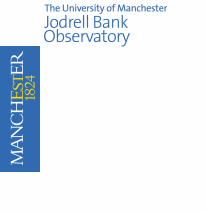- MMB Survey Menu
- Methanol Survey
- The Team
- Picture Gallery
- Links
- Survey Members Pages
Methanol Maser Survey
News
The Methanol MultiBeam Receiver
The 7-beam receiver system was commissioned on the Parkes Telescope in January 2006. The receiver system, which covers the frequency range 6.0-6.7 GHz, was constructed jointly at Jodrell Bank Observatory and the Australia Telescope National Facility. It delivers two 300-MHz IF bands in dual circular polarizations. It has been designed so that it can be also be used on the Lovell Telescope at Jodrell Bank Observatory, to search the Northern skies. The system is powerful enough to detect nearly all the methanol 6.7-GHz masers in the Galaxy, and the brightest methanol masers in the Magellanic Clouds and other Local Group galaxies. The receiver has other uses as well, including pulsar, recombination line and continuum surveys.

Methanol Masers and Star Formation
Although massive stars constitute only 10% of the mass of a galaxy, they dominate the luminosity, the energy input to the interstellar medium, the supply of heavy elements and, through their powerful UV-radiation, the temperature of the ISM. Yet their formation is still not understood. This is partly because they are rare, and therefore distant - the nearest is in Orion at 1500 light years. Secondly the process of birth is more rapid for massive stars, so again it is harder to catch them in the act.
Methanol masers are arguably the best tool we have to locate regions of massive star formation in our own Galaxy at a key stage in their formation, and study them at high angular resolution. The methanol is formed on the cool surfaces of interstellar dust grains, before the star forms, and then liberated when the newly forming star begins to warm its surroundings. Heat (infrared radiation) from the warm dust then excites the methanol to produce methanol masers.
Since its discovery, the methanol 6.7-GHz maser has been recognized as one of the brightest signposts to the formation of massive young stars (Menten 1991). It is the second strongest cosmic maser known (after water at 22 GHz), it is widespread and, unlike all other strong masers it is only found close to massive young stars. A survey for methanol 6.7-GHz masers is therefore a relatively quick and simple way to find these stars in the Galaxy, or in nearby galaxies. The high photon rate of the masers makes them readily detectable and their compact size eliminates problems with blending from extended emission (which is a limitation in the infrared and sub-mm wavebands).
The Methanol Multibeam Survey
The methanol multibeam survey is the most sensitive survey yet undertaken for massive young stars in the Galaxy. Most methanol masers have previously been found by searching regions that were already known to be forming massive stars (from infrared or radio observations). Systematic surveys have been limited to latitudes within 0.5 degrees of the galactic plane, with limited longitude coverage, and using 30-m class dishes. When equipped with the new 7-beam receiver, the Parkes Telescope and the upgraded Lovell Telescope can find methanol masers a hundred times faster than these smaller dishes, making it feasible to carry out a full systematic survey of the Galaxy. The MMB survey of the Milky Way will cover all latitudes within 2 degrees of the galactic plane, and is likely to double the number of methanol masers known.
The survey is carried out by scanning the telescope in galactic longitude, with data dumped every 5 seconds. Spectra cover a 4-MHz band, corresponding to a velocity range of 180 km/s, with 2048 channels each separated by 0.09 km/s. Regions towards the galactic centre are scanned more than once with different velocity settings, so that all likely radial velocities are searched. A second frequency band centred on the 6035-MHz line of hydroxyl (OH) is observed in parallel with the methanol band.
Once the masers have been detected using the multibeam receiver their position is determined to about 20 seconds of arc. Follow-up measurements are then made using the Australia Telescope Compact Array (ATCA) and the Multi-Element Radio-Linked Interferometer Network (MERLIN) to determine precise positions accurate to better than 0.1 seconds of arc (the resolution of the Hubble Space Telescope). The methanol multibeam catalogue will contain the multibeam spectra plus the accurate positions. The resulting catalogue will provide a major resource for many follow-up investigations at other wavelengths.
Click on a menu item for more information